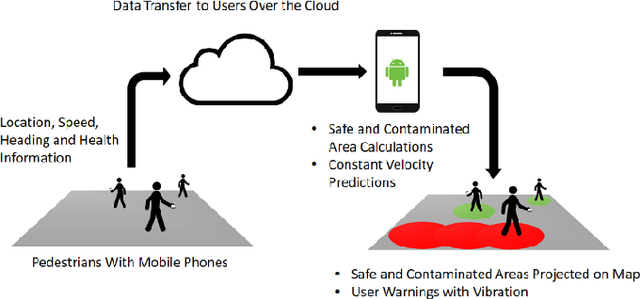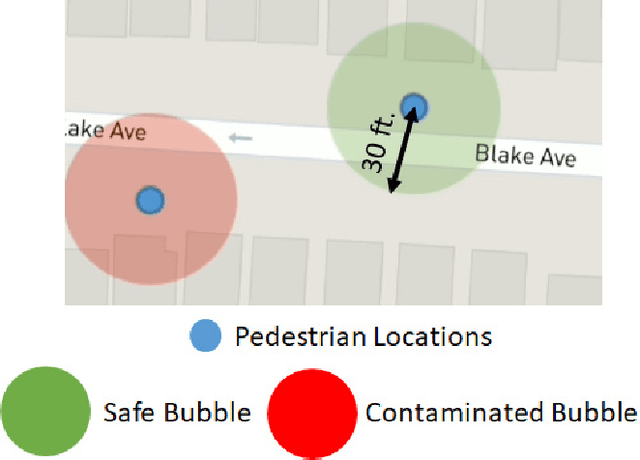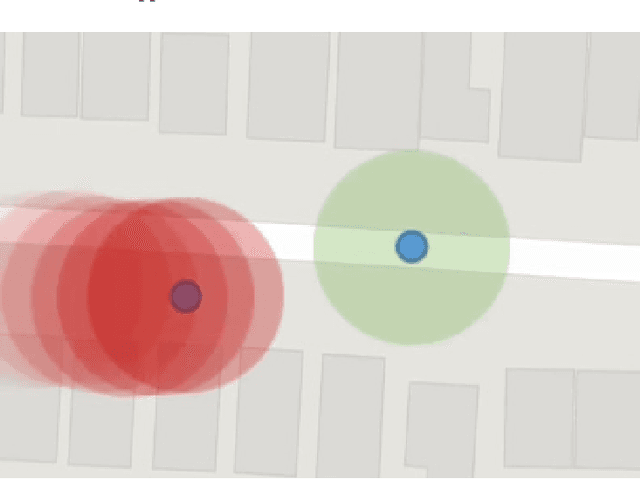Pedestrian Path Modification Mobile Tool for COVID-19 Social Distancing for Use in Multi-Modal Trip Navigation
Paper and Code
May 08, 2021



The novel Corona virus pandemic is one of the biggest worldwide problems right now. While hygiene and wearing masks make up a large portion of the currently suggested precautions by the Centers for Disease Control and Prevention (CDC) and World Health Organization (WHO), social distancing is another and arguably the most important precaution that would protect people since the airborne virus is easily transmitted through the air. Social distancing while walking outside, can be more effective, if pedestrians know locations of each other and even better if they know locations of people who are possible carriers. With this information, they can change their routes depending on the people walking nearby or they can stay away from areas that contain or have recently contained crowds. This paper presents a mobile device application that would be a very beneficial tool for social distancing during Coronavirus Disease 2019 (COVID-19). The application works, synced close to real-time, in a networking fashion with all users obtaining their locations and drawing a virtual safety bubble around them. These safety bubbles are used with the constant velocity pedestrian model to predict possible future social distancing violations and warn the user with sound and vibration. Moreover, it takes into account the virus staying airborne for a certain time, hence, creating time-decaying non-safe areas in the past trajectories of the users. The mobile app generates collision free paths for navigating around the undesired locations for the pedestrian mode of transportation when used as part of a multi-modal trip planning app. Results are applicable to other modes of transportation also. Features and the methods used for implementation are discussed in the paper. The application is tested using previously collected real pedestrian walking data in a realistic environment.
 Add to Chrome
Add to Chrome Add to Firefox
Add to Firefox Add to Edge
Add to Edge